Select Language
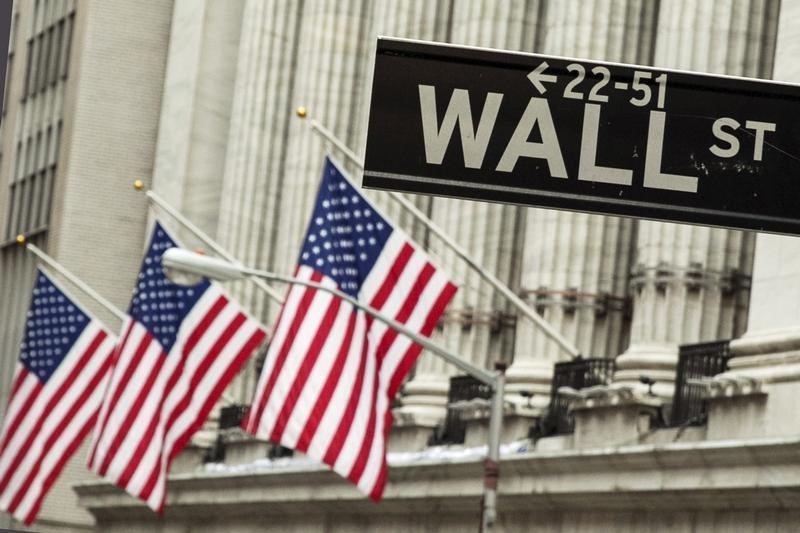
U.S. stock index futures fell Monday amid growing uncertainty over President Donald Trump’s plans for trade tariffs.
At 05:15 ET (09:15 GMT), Dow Jones Futures fell 115 points, or 0.3%, S&P 500 Futures dropped 32 points, or 0.5%, and Nasdaq 100 Futures slipped 145 points, or 0.6%.
The main averages were closed on Friday for the Independence Day holiday, and a period of profit-taking looks likely after the S&P 500 and the Nasdaq hit record highs on Thursday.
Caution over trade negotiations
Wall Street is set to start the new week on a cautious note with the expiration of a pause to Trump’s heightened reciprocal tariffs set to end on July 9, with the trade talks having only yielded preliminary deals with the United Kingdom and Vietnam, as well as a trade truce with China.
Trump has said that the White House will shortly begin to send out letters to U.S trading partners outlining their new tariff rates, although some confusion has surrounded when the levies would come into effect, with media reports suggesting that rates may not kick in until August 1.
Commerce Secretary Howard Lutnick told reporters on Sunday that Trump will be setting the rates and potential deals now, while Treasury Secretary Scott Bessent had earlier said the tariffs will be imposed as outlined in April if no trade deals were reached by August 1.
This left markets uncertain over just how high Trump’s tariffs will be, given that the president had in early-April announced tariffs going as high as 50% on major economies, while he also said over the weekend that the rates could reach 60% or 70%.
Adding to the uncertainty, Trump also said that countries aligned with the BRICS bloc will face an extra levy over allegedly anti-American practices.
Trump has repeatedly criticized the bloc, which consists of founding members Brazil, Russia, India, China, and South Africa, over its efforts to develop new trade alternatives to the United States.
Fed minutes due Wednesday
There’s little on the economic data slate Monday, and so eyes are likely to turn to the release of the minutes of the latest Federal Reserve policy meeting on Wednesday, with investors keen for more insight into how policymakers see interest rates evolving over the rest of the year.
At its gathering in June, the U.S. central bank chose to leave borrowing costs unchanged at a target range of 4.25% to 4.5%, arguing that a wait-and-see approach continued to be appropriate as more clarity emerged around the impact of Trump’s tariffs on the broader economy.
Tesla hit hard
There are only a few major companies scheduled to report earnings this week, including Delta Air Lines (NYSE:DAL), packaged foods group Conagra Brands (NYSE:CAG) and jeans-maker Levi Strauss (NYSE:LEVI).
Elsewhere, Tesla (NASDAQ:TSLA) shares fell sharply premarket after CEO Elon Musk said he will launch a new political party, as investors fear that the move will likely further divert his attention away from the company.
Brokerage firm Wedbush warned in a Sunday note that Musk diving deeper into politics is “exactly the opposite direction” that Tesla investors and shareholders want from the CEO, especially as the electric car company grapples with declining sales and prepares a pivot into autonomous vehicles.
Musk’s announcement of the “America Party” also comes amid a bitter public feud between the Tesla CEO and U.S. President Donald Trump, especially over the recently-approved “Big Beautiful Bill.”
Crude bounces from OPEC+-inspired losses
Crude prices rose Monday, overturning earlier losses after OPEC+ announced plans to increase output more than expected in August.
At 05:15 ET, Brent futures climbed 0.3% to $68.47 a barrel and U.S. West Texas Intermediate crude futures rose 0.5% to $66.82 a barrel.
The Organization of the Petroleum Exporting Countries and its allies, a group known as OPEC+, announced on Saturday that it will increase oil output by 548,000 barrels per day (bpd) in August.
The hike is larger than the 411,000 bpd increases already implemented for May, June, and July. The group also warned that it will consider another 548,000 bpd hike in September at the next meeting on August 3.
It marks a continued rollback of the voluntary 2.2 million bpd in cuts that major producers like Saudi Arabia and Russia had initiated earlier this year to support prices.
However, the market was also supported by the news that Saudi Arabia raised the August price for its flagship Arab Light crude to a four-month high for Asia, in a show of confidence in oil demand by the world’s largest crude exporter.

Two major U.S. stock average log fresh record closing highs to end a holiday-shortened trading week, although the buoyant mood fails to extend into Europe with uncertainty still swirling around an aggressive U.S. trade agenda. The U.S. Congress passes President Donald Trump’s giant policy bill, in a key legislative win that came despite some intraparty detractors. Trump also suggests Hamas could deliver its decision on a temporary ceasefire with Israel in the coming hours.
1. S&P 500, Nasdaq notch record closes
The benchmark S&P 500 and tech-heavy Nasdaq Composite both logged fresh all-time peaks on Thursday, as investors cheered a strong U.S. jobs report and shrugged off predictions that the Federal Reserve would now opt not to slash interest rates this month.
By the end of trading on the final day of a holiday-shortened week, the S&P 500 had climbed by 0.8% and the Nasdaq had advanced by 1.0%. The blue-chip Dow Jones Industrial Average also gained 0.7%, hovering within striking distance of its own record high. Stock markets in the U.S. will be shuttered on Friday for the Independence Day holiday.
Labor Department data showed that the U.S. added more roles than anticipated in June, although the numbers masked a slowdown in private hiring to an eight-month low. The unemployment also ticked down to 4.1%, but this was partly driven by more Americans choosing to leave the workforce, while a decline in the length of the average work week suggested that businesses may be ratcheting down hours.
Still, the figures underlined broad resilience in the labor market that, coupled with recently benign inflationary pressures, could persuade Fed policymakers to hold off on cutting borrowing costs at their next two-day gathering on July 29-30.
Meanwhile, in individual stocks, Nvidia (NASDAQ:NVDA)’s market capitalization surged to nearly $4 trillion. The designer of high-end artificial intelligence chips and focal point of a boom in enthusiasm around the nascent technology is now on pace to become the most valuable company in history.
2. Congress passes Trump’s signature policy bill
The House of Representatives approved the Senate’s version of President Trump’s massive tax-cuts and spending bill, as Republicans in the lower chamber won over party holdouts to overcome staunch Democratic opposition.
It marks a significant victory for Trump, who has invested much of his political capital into pushing the bill through Congress prior to a self-imposed July 4 deadline. Trump is now due to sign it into law at an event on Friday.
Trump has argued that the measures -- which included an extension to his 2017 tax cuts and other promised tax reductions as well as elevated spending on defense and border security -- will fuel economic growth. He told reporters that the bill would now put the U.S. on a "rocket ship."
But the bill’s detractors, including a handful of Republicans, have voiced concerns around its impact on the nation’s finances. Key food-assistance and health care programs would also be cut, and tax breaks for clean energy projects rolled back, to help offset the costs of the bill.
The Congressional Budget Office has estimated that it will add more than $3 trillion to the already sky-high U.S. debt pile and remove health coverage for millions of Americans. The White House has disputed the forecasts.
3. Trump to send out tariff letters
But, even with the unexpectedly solid labor market figures and Trump’s sprawling policy bill now in the rearview mirror, lingering uncertainty over U.S. tariffs has dampened what was an otherwise upbeat vibe heading into the Fourth of July weekend.
Attention is now turning to the upcoming expiration of a pause to sweeping "reciprocal" levies next week, with investors unclear over how Trump will approach the deadline.
Despite claims at the beginning of the 90-day delay that the Trump administration would pursue individual trade deals with dozens of countries, Washington has only revealed framework pacts with three nations: China, Britain and, earlier this week, Vietnam. Trump has suggested that a "couple" more could soon be revealed.
But the president has appeared to pivot away from the goal of securing a raft of these agreements, saying that he will start sending letters out to trading partners on Friday specifying what tariff rates they will incur on imported goods into the U.S.
He seemed to acknowledge the difficulty of negotiating trade deals with as many as 170 countries, saying "they’re very much more complicated."
4. Trump expects Hamas ceasefire decision in 24 hours
Elsewhere, Trump said it will be known in 24 hours if the Palestinian militant group Hamas has agreed to accept a ceasefire deal with Israel.
Both sides have been engaged in brutal fighting for decades, but the latest bout of violence began in October 2023 when Hamas attacked Israel.
Trump noted earlier this week that Israel had agreed to the conditions of a 60-day halt to hostilities that could open the door to a more permanent end to the war.
Citing a source close to Hamas, Reuters reported that the group was seeking guarantees that the U.S.-backed framework truce would lead to peace.
Meanwhile, Trump hinted that the Abraham Accords, a deal signed in his first term that aimed to normalize relations between Israel and some Gulf states, could be expanded. "I think a lot of people are going to be joining the Abraham Accords," he said.
5. Oil prices choppy
Crude prices hovered around the flatline in thin trading ahead of the weekend’s OPEC+ meeting, which is expected to result in an increase in production.
At 03:42 ET, Brent futures dropped 0.1% to $68.75 a barrel and U.S. West Texas Intermediate crude futures added 0.1% to $67.05 a barrel.
Both contracts were up between 1% to 2% this week, bouncing back from double-digit losses during the prior week.
The Organization of the Petroleum Exporting Countries and its allies, known as OPEC+, is expected to once again hike production by 411,000 barrels a day in August, at the weekend’s meeting, following similar hikes in the past three months.
The production hikes come as the OPEC+ scales back two years of sharp production cuts, in part to offset the economic impact of persistently low oil prices.
Elsewhere, U.S. news website Axios reported on Thursday that the U.S. was planning to meet with Iran next week to restart nuclear talk, while Iran Foreign Minister Abbas Araqchi said Tehran remains committed to the nuclear Non-Proliferation Treaty.
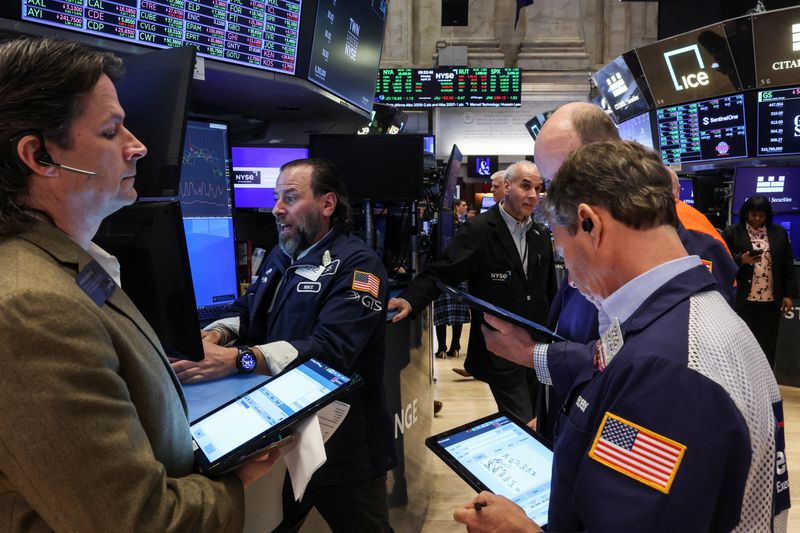
U.S. stock futures point up ahead of the release of the all-important June nonfarm payrolls report. Investors were also pouring through a preliminary trade deal between the U.S. and Vietnam, as the White House pushes to forge pacts with individual countries with the expiration of delayed "reciprocal" tariffs just days away. Elsewhere, U.S. House Republican leaders face some resistance as they attempt to finalize and pass President Donald Trump’s signature policy bill before a self-imposed Fourth of July deadline.
1. Futures rise
U.S. stock futures ticked slightly higher on Thursday, as investors geared up for key jobs data and assessed the outlook for U.S. trade talks.
By 03:30 ET (07:30 GMT), The Dow futures contract had risen by 39 points, or 0.1%, S&P 500 futures had climbed by 6 points, or 0.1%, and Nasdaq 100 futures had increased by 33 points, or 0.1%. Thursday will be the final day of U.S. trading before markets close for the July 4 holiday.
The main averages on Wall Street mostly gained on Wednesday, with the benchmark S&P 500 and tech-heavy Nasdaq Composite both posting fresh record closes. The Dow Jones Industrial Average was the laggard, finishing the session broadly unchanged, although the blue-chip index remained within striking distance of its all-time peak.
Sentiment was bolstered by Trump’s unveiling of a trade agreement with Vietnam, a key source of imported goods like footwear and athletic apparel. Meanwhile, big-name tech stocks moved up, including Nvidia (NASDAQ:NVDA) and Apple (NASDAQ:AAPL).
Stocks were initially dented by an unexpected dip in a monthly indicator of U.S. private payrolls, but markets appeared to widely interpret the data point as a sign that the Federal Reserve will move to aggressively cut interest rates in the coming months.
2. NFPs ahead
A more crucial gauge of the American labor market is due out on Thursday.
Economists predict that the Bureau of Labor Statistics’ June nonfarm payrolls report will show that the U.S. economy added 111,000 roles, down from 139,000 in May. The unemployment rate is also seen edging up slightly to 4.3% from 4.2%.
The ADP National Employment Report on Wednesday suggested that, against tariff-fueled economic uncertainty, firms are hiring less and workers are more reticent to leave their current jobs. However, there is little correlation between the ADP and BLS numbers.
Fed policymakers — who are partly tasked with aiming for maxiumum employment — will likely be keeping close tabs on incoming labor market data, especially as they remain wary of the impact of Trump’s tariff agenda on the wider economy. Fed Chair Jerome Powell, who has faced intensifying pressure from Trump to quickly slash rates, has backed a cautious approach to future interest rate changes, but did say this week that the central bank could bring down borrowing costs at its four remaining policy meetings this year.
3. Trump announces Vietnam trade deal
Stocks on Wednesday erased their early losses after Trump announced a trade deal with Vietnam that will set a 20% tariff rate on items incoming from the Southeast Asian nation.
Analysts noted that this rate was lower than the punishing “reciprocal” levy Trump unveiled at his “Liberation Day” event in early April. Shares in Nike (NYSE:NKE) and other athletic-wear groups who sell products from Vietnam gained.
The agreement also places a 40% tariff on so-called “transshipping,” a move that could indirectly have consequences for China. The White House has claimed that countries like Vietnam have become conduits for Chinese goods to be sent to the U.S. while evading heightened American duties.
While preliminary and abbreviated compared to traditionally more comprehensive trade pacts, the deal was seen as an indication that the Trump administration was making progress in reaching new trade accords prior to the re-imposition of the now-paused reciprocal tariffs later this month. Trump has previously reached trade truces with China and Britain, and has hinted at a possible deal with India.
4. U.S. lifts chip design export restrictions on China
Elsewhere, the U.S. Commerce Department has lifted restrictions on chip design technology exports to China, company statements showed on Wednesday evening, as part of a recent trade agreement between Washington and Beijing.
Chip designers Synopsys (NASDAQ:SNPS) and Cadence Design (NASDAQ:CDNS) Systems shares rose sharply after the announcements, 24-hour trading data showed. Synopsys was last up 5.8% at $553.67, while Cadence rose 4.7% to $325.58.
Synopys said in a statement that it was informed by the U.S. Department of Commerce that restrictions on its exports to China, which were imposed in late-May, have now been rescinded effective immediately.
The company said it was now “working to restore access to the recently restricted products in China.”
5. House GOP leaders attempt to woo holdouts to Trump policy bill
Investors are also paying attention to developments in Washington, where Republicans in the U.S. House of Representatives are haggling into the small hours of the morning over passing the Senate’s version of a massive, Trump-backed tax-cuts and spending bill.
GOP legislators are racing to soothe intraparty worries over the laundry list of measures, which would, among a host of reforms, extend Trump’s 2017 tax reductions and create new tax breaks while boosting spending on defense and border security.
Securing enough Republican support for the bill remains crucial, given the party’s narrow majorities in Congress and united Democratic opposition. But some conservative lawmakers have voiced fears that the bill would expand the nation’s already-ballooning debt pile and raised concerns over its proposed cuts to Medicaid, a federal program for low-income Americans.
Republican leaders are also under a time crunch. Trump has set a Fourth of July deadline for having the bill approved by Congress and on his desk to be signed into law.
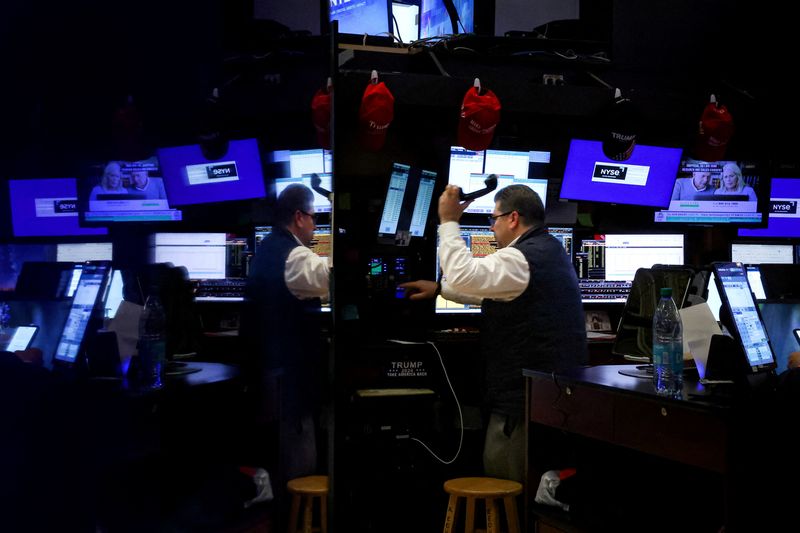
U.S. stock futures point higher following the Senate’s passage of a behemoth fiscal bill that holds President Donald Trump’s signature legislative agenda. The measure now moves to the House of Representatives, with Republicans facing an impending deadline to bring the bill before Trump to be signed into law. On the economic calendar, private payrolls data could provide a fresh glimpse into the state of the American labor market.
1. Futures higher
U.S. stock futures edged higher on Wednesday, as investors assessed the U.S. Senate’s now-approved version of a massive tax-cuts and spending package and kept tabs on the outlook for interest rates and tariffs.
By 03:33 ET (07:33 GMT), the Dow futures contract had inched up by 127 points, or 0.3%, S&P 500 futures had advanced by 17 points, or 0.3%, and Nasdaq 100 futures had climbed by 56 points, or 0.2%.
The main indices were mixed in the previous session, with traders eyeing a more hawkish reading of U.S. hiring and a smaller-than-anticipated contraction in manufacturing sector activity.
But the major story revolved around the fate of Trump’s so-called “One Big Beautiful Bill,” which, after narrowly passing the Senate, now moves to the House of Representatives for final approval -- with a self-imposed July 4 deadline to have the legislation on Trump’s desk looming large.
2. House to take up Senate’s version of Trump-backed fiscal package
Still, it remains uncertain whether the Republican lawmakers currently trying to shepherd the bill through Congress will be able to meet that date.
The House is expected to take up the Senate’s updated text on Wednesday, although some pushback from more fiscally-conservative GOP legislators is predicted to emerge.
Throughout the drawn-out process of passing the bill, some Republicans have balked at its potential impact on the country’s finances. Nonpartisan observers have flagged that the measures, which include the extension of Trump’s 2017 tax cuts, new tax reductions, and increased spending on defense and border security, will end up expanding the federal debt pile by over $3 trillion.
Despite the projected uptick in U.S. obligations, Treasury markets have reacted in a relatively muted manner, “cushioned by hopes” that the Federal Reserve may decide to slash interest rates in the coming months, analysts at ING said in a note to clients.
3. ADP jobs data ahead
The trajectory of Fed policy will likely be front and center when the latest monthly gauge of private payrolls is released on Wednesday.
Economists expect the figure in the ADP National Employment Report to rise to 99,000 in June, up from 37,000 in the prior month.
Data on Tuesday showed that while job openings unexpectedly ticked up in May, hiring weakened, indicating a possible cooling in an otherwise resilient labor picture. Further insight into the health of the labor market is due to come on Thursday, when the all-important nonfarm payrolls report is scheduled to be unveiled.
Pushing for maximum employment, along with corralling inflationary pressures, has long been a key mandate for Fed policymakers. Labor market demand has shown signs of receding while price gains have recently been relatively benign, although central bank officials have largely backed a wait-and-see approach to further interest rate changes, citing uncertainty over the effect of sweeping U.S. tariffs on the wider economy.
4. Trump hints at India trade deal with tariff pause deadline looming
The levies have been a major focus for markets, especially with the expiration of a pause to Trump’s punishing "reciprocal" duties just days away.
Trump administration officials have been carrying out negotiations with a host of nations during the delay, yet the White House has displayed little progress in securing fresh agreements.
On Tuesday, Trump told reporters that he believed India was ready to ink a trade deal with the U.S. that would help American companies and lower the country’s tariffs. India faces an impending 26% levy rate on July 9, when Trump’s reciprocal tariff delay ends.
"Right now, India doesn’t accept anybody in. I think India is going to do that, if they do that, we’re going to have a deal for less, much less tariffs," he said.
However, Trump also hinted that he may not choose to extend the deadline -- and would simply send out letters telling individual nations their tariff rates.
5. Oil subdued
Crude prices were little moved Wednesday, as traders digested progress towards an Israel-Hamas ceasefire and a build in U.S. inventories ahead of an upcoming OPEC+ meeting.
At 03:32 ET, Brent futures inched up 0.1% to $67.16 a barrel and U.S. West Texas Intermediate crude futures were unchanged at $65.45 a barrel.
President Trump on Tuesday evening said Israel had agreed to the conditions needed to finalize a 60-day ceasefire with Hamas, while also urging the Palestinian group to accept the deal.
Data from the American Petroleum Institute showed on Tuesday that U.S. oil inventories grew 0.68 million barrels in the week to June 27, a build that followed five weeks of deep, outsized draws in U.S. oil stockpiles, and raised some questions over fuel demand in the travel-heavy summer season.
The official government inventory report is due later on Wednesday.
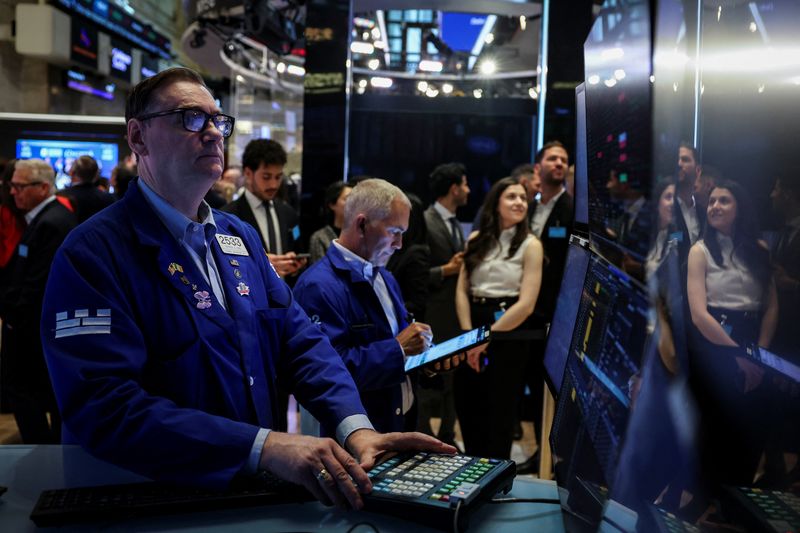
U.S. futures inch down following an upbeat session on Monday that saw global stocks touch a fresh intraday record, with traders eyeing a resumption in trade talks between the U.S. and Canada and a weakening dollar. U.S. President Donald Trump ratchets up his campaign against Federal Reserve Chair Jerome Powell, sending the central bank head a scathing handwritten letter urging him to quickly bring down interest rates. Powell is scheduled to speak at a much-anticipated panel discussion with global central bank heads at the European Central Bank’s annual forum in Portugal. Elsewhere, the White House is reportedly narrowing the scope of its targeted trade deals as an impending expiration to a delay to Trump’s punishing "reciprocal" tariffs looms large.
1. Futures tick lower
U.S. stock futures pointed slightly lower on Tuesday, suggesting that recently bullish investors were taking some caution as they assessed headlines around trade and fiscal policy and prepared for the release of key labor market data later this week.
By 03:32 ET (07:32 GMT), the Dow futures contract had inched down by 30 points, or 0.1%, S&P 500 futures had slipped by 11 points, or 0.2%, and Nasdaq 100 futures had fallen by 56 points, or 0.3%.
The main averages on Wall Street advanced in the prior session, underpinned by hopes for renewed trade talks between the U.S. and Canada. However, sentiment was somewhat dented by worries that a massive tax-cuts and spending bill currently being debated in the U.S. Senate would expand the already massive $36.2 trillion federal debt pile.
“Notwithstanding some intra-day volatility based on errant headlines, there’s little acute anxiety around either the reconciliation bill or tariffs,” analysts at Vital Knowledge said in a note.
Financial markets are also keeping tabs on upcoming economic data this holiday-shortened trading week, particularly the June nonfarm payrolls report on Thursday. Today, the key data point for traders will be a tracker of activity in the U.S. manufacturing sector.
2. Trump steps up criticism of Fed’s Powell
President Trump stepped up his attacks on Fed Chair Jerome Powell on Monday, sending the central bank leader a note criticizing him for being "as usual, too late" on cutting interest rates.
In a handwritten letter that came with a list of policy rates from central banks around the world, Trump urged Powell to lower borrowing costs by "a lot," arguing that "hundreds of billions" of dollars are "being lost."
Trump added in a social media post displaying the letter that the U.S. should be paying "1% interest or better."
Following the Fed’s decision to leave rates at a target range of 4.25% to 4.5% after a two-day meeting last month, Powell has backed a wait-and-see attitude to future policy actions as a prudent approach during a time of uncertainty around the impact of Trump’s aggressive tariff agenda on the wider economy. Concerns have swirled around the potential inflationary effect of the levies, although price gains have stayed relatively muted in recent weeks.
Exasperated with a perceived lack of action compared to rate-cutting cycles being deployed by other global central banks, Trump has launched a barrage of verbal and written attacks at Powell and is reportedly mulling over naming a potential successor to Powell later this year. Such a move could create a so-called "shadow" Fed chair which may diminish Powell’s ability to sway policy decisions, analysts have suggested.
3. Uncertainty at Sintra
Powell will be in the spotlight again on Tuesday, when he is due to appear in a panel discussion at the European Central Bank’s annual forum in Sintra, Portugal.
ECB President Christine Lagarde, as well as the heads of central banks from Japan, Britain and South Korea, are set to join Powell for the discussion at 13:30 GMT.
Reports have predicted that the talk will partly focus on whether the role of the U.S. dollar as the world’s go-to currency for saving and investing is changing. The greenback has endured its worst start to a year since the 1970s, driven down in part by Trump’s more protectionist trade stance.
But "uncertainty" is seen as the likely buzzword at the event, especially as the direction of sweeping U.S. tariffs and the Trump-backed fiscal package remains unclear. In her opening remarks on Monday, Lagarde said that this lack of clarity should be an ongoing and major feature of the global economy.
4. U.S. narrows trade ambitions - FT
U.S. trade officials under Trump are pivoting to narrower trade agreements in a bid to secure quick wins ahead of a July 9 deadline, when steep reciprocal tariffs are set to return, the Financial Times reported on Tuesday, citing people familiar with the talks.
The administration is seeking “agreements in principle” on limited issues with select countries to avoid the reimposition of tariffs as high as 50%, the FT report stated.
These phased deals mark a retreat from Trump’s original pledge to strike 90 comprehensive trade agreements during a 90-day pause in tariff enforcement, which began on April 2.
While such agreements may spare countries from the harshest levies, a 10% baseline tariff would remain in place as negotiations on broader issues continue.
However, talks remain complicated, and alongside the narrower deal approach, the administration is still considering tariffs on key sectors, the FT reported.
5. Crude choppy
Crude prices were volatile after they touched a three-week low fueled by easing supply concerns and expectations of an OPEC+ production hike.
At 03:38 ET, Brent futures had slipped 0.4% to $66.47 a barrel. It earlier fell to its lowest level since June 11, shortly before the onset of the Israel-Iran war. U.S. West Texas Intermediate crude futures dropped 0.5% to $64.81 a barrel.
The Organization of the Petroleum Exporting Countries and allies, known as OPEC+, is set to meet on July 6, and Reuters reported last week that the group will increase output by 411,000 barrels per day in August, following similar hikes in May, June, and July.
The increase would bring OPEC+’s total supply increase for the year to 1.78 million barrels per day, although the hike is still smaller than the total number of production cuts enacted by the producers’ group in the past two years.

Gold prices rose from a one-month low in Asian trade on Monday, supported by a weaker dollar, though safe-haven demand stayed muted amid easing Middle East tensions and optimism over potential U.S. trade deals.
Spot Gold rose 0.5% to $3,290.25 an ounce, while Gold Futures for August gained 0.4% to $3,300.0/oz by 02:00 ET (06:00 GMT).
Bullion fell nearly 3% last week, marking its steepest weekly drop since early May. It was on track to end the month flat, as early gains from geopolitical tensions were erased by losses after the Israel-Iran ceasefire.
Gold supported by weak dollar; US trade deals in focus
A ceasefire between Israel and Iran brokered by U.S. President Donald Trump last week eased geopolitical risk in the Middle East and curbed the appeal of gold.
On the trade front, a U.S.–China deal signed last week in Geneva, which resolves rare-earth shipments and trims key trade friction, bolstered sentiment.
Meanwhile, a U.S.–U.K. trade agreement came into effect Monday, slashing car tariffs to 10% and fully eliminating aircraft parts duties.
However, the July 9 deadline looms for the potential reinstatement of duties on other trading partners, and for global steel and aluminum tariffs.
Gold prices were supported by a weaker dollar as markets were increasingly betting on at least one Federal Reserve rate cut by September.
The US US Dollar Index fell 0.2% in Asian trading hours, remaining near a three-year low.
Metal markets rise, Platinum set for 30% monthly jump
A weaker dollar makes the commodity cheaper for foreign buyers, thus increasing its demand.
Platinum Futures jumped 1.9% to $1,377.00 after a recent pullback from a more than decade-high. The precious metal was set to climb more than 30% this month.
Silver Futures were largely muted at $36.045 per ounce.
Meanwhile, benchmark Copper Futures on the London Metal Exchange were unchanged at $9,888.95 a ton, while U.S. Copper Futures rose 0.7% to $5.132 a pound.
Gains in the red metal were capped as data showed China’s manufacturing sector contracted in June, highlighting ongoing weakness in external demand amid elevated U.S. trade tariffs on the world’s top copper importer.
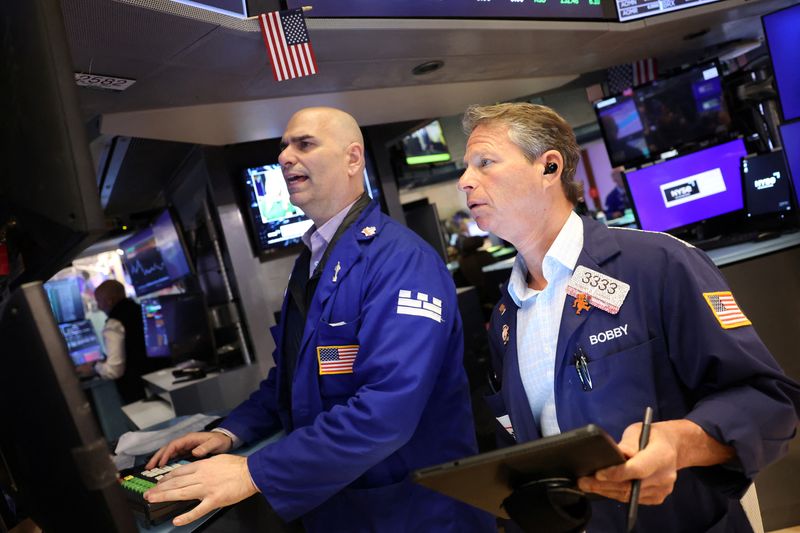
U.S. stock futures rise, with investors looking ahead to fresh inflation data and eyeing possibly easing geopolitical and trade tensions. The Federal Reserve’s preferred gauge of price gains is due out during the session, as policymakers remain wary of the potential impact of U.S. tariffs on the broader economy. Meanwhile, Nike (NYSE:NKE) shares spike in extended hours trading after the athletic apparel retailer unveils an upbeat forecast and outlines plans to shift some production out of China and into the United States.
1. Futures climb
U.S. stock futures pointed higher on Friday, suggesting a positive end to a week that has featured growing optimism among investors thanks to a resilient Israel-Iran ceasefire and tentative signs of cooling trade tensions.
By 03:33 ET (07:33 GMT), the Dow futures contract had risen by 149 points, or 0.3%, S&P 500 futures had gained 20 points, or 0.3%, and Nasdaq 100 futures had risen by 87 points, or 0.4%.
The main averages on Wall Street advanced in the prior session, buoyed by an ongoing truce between Israel and Iran which began earlier this week and has soothed concerns that the conflict would spill out across the Middle East.
Sentiment received an additional boost when a White House official said the U.S. had forged an agreement with China over how to expedite the shipment of rare earths materials that are crucial to a range of industries. Meanwhile, White House Press Secretary Karoline Leavitt suggested that President Donald Trump could extend his 90-day reciprocal tariff pause beyond a self-imposed deadline early next month.
Reports that Trump was playing with the idea of possibly naming a replacement to Federal Reserve Chair Jerome Powell in September or October, potentially with someone more dovish on borrowing costs, also heightened expectations there will be a "shadow" central bank chair during the final months of Powell’s tenure. The already-beleaguered U.S. dollar received a further knock, falling to a near 3-1/2-year low and heading towards its largest weekly loss in more than a month.
"There have been two favorable macro developments in recent days, including the dovish pivot in the Fed narrative and the reduction in geopolitical risk," analysts at Vital Knowledge said in a note.
2. PCE ahead
On the economic calendar, the May reading of the personal consumption expenditures price index is set to be front and center.
Economists anticipate that the measure, which is the Fed’s preferred gauge of inflation, sped up slightly to 2.3% year-on-year and matched April’s pace on a monthly basis. The core metric, stripping out volatile items like food and fuel, is seen accelerating marginally at an annualized rate and equalling April’s month-over-month pace of 0.1%.
The trajectory of inflation remains one of the major question marks facing Fed policymakers as they decide on the path ahead for interest rates. The central bank has recently adopted a wait-and-see attitude to future policy changes, arguing that they are still waiting to see how Trump’s aggressive tariff agenda is impacting price gains.
So far, there has been little evidence that the duties have driven inflationary pressures upward, but analysts have noted that the Fed is likely waiting to see incoming data for June, July and August before feeling more confident that this benign trend will hold.
Still, some signs of headwinds could be emerging in the labor market, which, along with inflation, is a key focus for the Fed. Data this week showed that the number of Americans receiving jobless benefits rose to its highest since November 2021 in the week ended on June 14, possibly indicating that more people are staying unemployed for longer. That said, first-time claims and the four-week moving average both slipped.
3. Nike’s production plans
Nike has laid out plans to move more of its production operations out of China and to the United States, as the sportswear group looks to avoid higher possible costs from sweeping U.S. tariffs.
Speaking to analysts in a call after Nike posted better-than-anticipated fourth-quarter returns, executives flagged that Trump’s levies threaten to add roughly $1 billion to the company’s expenses. At the moment, around 16% of its shoes imported to the U.S. are derived from China, one of the major targets of Trump’s tariffs, CFO Matthew Friend noted.
Friend outlined plans to slash that number to a "high single-digit percentage range" by the end of May 2026.
Nike’s quarterly sales dipped 12% to $11.10 billion, but still came in above estimates due partially to the firm’s key running business finding its footing after heavy competition weighed on the unit for a string of quarters.
For its first quarter, Nike sees revenue sliding in the mid-single digits, but this was rosier than analysts’ estimates for a 7.3% decline.
Shares in Nike surged in extended hours trading.
4. Big bank stress test results due
The Fed is due to release the results from its annual big bank stress tests on Friday.
Analysts have predicted that the lenders are likely to pass their health check and display ample capital that can be deployed in a number of ways.
Employed by the Fed to determine how much cash banks need to have on hand in order to withstand a severe economic decline, this year’s stress tests are predicted to be less strenuous than prior iterations.
"[The stress tests] should give the ’green light’ to banks to deploy more capital for loans, deals, and buybacks. Many managements said that their view of excess capital should become more clear post-test," analysts at Wells Fargo said in a note to clients.
Introduced in the wake of the 2007-2009 financial crisis, the exercise has become a major part of capital planning for the 22 banks facing the tests, and a key to determining the amount of dividends that should be handed out to shareholders.
5. Oil inches up
Crude prices edged higher, but are on track for their steepest weekly falls for over two years as the Israel-Iran ceasefire saw traders remove a hefty risk premium from the market.
At 03:32 ET, Brent futures climbed 0.7% to $67.14 a barrel and U.S. West Texas Intermediate crude futures rose 0.7% to $65.69 per barrel.
Both benchmarks are on course for weekly losses of around 12%, heading for their steepest weekly decline since March 2023, and are now back at the levels they were at before the conflict between Israel and Iran began.
Small gains in prices later in the week resulted from U.S. government data showing crude oil and fuel inventories fell a week earlier, pointing to resilient demand in the world’s largest economy.
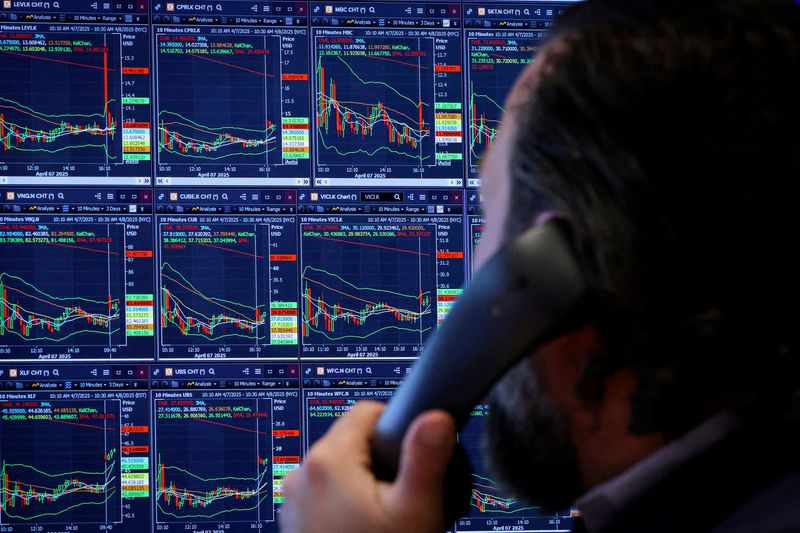
U.S. stock futures tick higher as the benchmark S&P 500 index remains within striking distance of an all-time high. President Donald Trump is reportedly toying with the idea of naming a replacement to Federal Reserve Chair Jerome Powell later this year, as Trump’s frustration with the central bank’s cautious policy decisions grows. Elsewhere, BYD shares dip on a media report that the Chinese electric car giant’s production has decelerated, while Shell denies reports that it is considering a purchase of rival BP (NYSE:BP).
1. Futures rise
U.S. stock futures pointed higher on Thursday, with the S&P 500 hovering just below record high levels reached in February.
By 03:10 ET (07:10 GMT), the Dow futures contract had risen by 84 points, or 0.2%, S&P 500 futures had increased by 14 points, or 0.2%, and Nasdaq 100 futures had climbed by 74 points, or 0.3%.
The main averages on Wall Street ended in mixed fashion on Wednesday, pausing a two-day rally, as investors gauged a ceasefire between Israel and Iran and assessed testimony from Federal Reserve Chair Jerome Powell.
Attention is now turning to the release of the key personal consumption expenditures price index on Friday. The Fed’s preferred inflation metric comes after Powell backed a wait-and-see approach to future interest rate decisions in his comments to Congressional lawmakers this week. Some policymakers, including Powell, have argued that this strategy is appropriate until more clarity emerges around the impact of aggressive U.S. tariffs on the broader economy.
"Markets seem to be trusting the ceasefire [...], and the dollar is back to testing its lows. Expect U.S. data to play a bigger role from here, especially since Fed Chair Powell’s cautious stance during his Congressional testimony included some subtle dovish hints," analysts at ING said in a note.
2. Trump comments on potential Powell replacement
Powell’s commitment to the Fed’s take-it-slow approach to policy has been frequently criticized by President Trump, who is eager to see the central bank follow many of its global counterparts in quickly slashing rates.
Not doing so is costing the government hundreds of billions of dollars in interest payments, Trump has claimed.
These comments, which have been regularly lobbed for much of the year and on Wednesday even included jibes at Powell’s mental capacity, have raised speculation that the president may soon move to replace him.
Trump suggested to reporters on Wednesday that he has narrowed down a list of potential successors to three or four people. The Wall Street Journal also reported that an exasperated Trump is mulling potentially selecting and announcing the replacement by September or October. The paper added that Trump’s anger with Powell could even prompt him to unveil the decision sometime this summer.
3. BYD slips on report of slowing production
Hong Kong-listed shares of Chinese electric vehicle leader BYD (HK:1211) (SZ:002594) fell more than 2% after a Reuters report revealed the company has slowed production and postponed its expansion plans, reversing its aggressive growth strategy.
Citing people familiar with the matter, the report detailed that BYD has cancelled night shifts and cut output by at least one-third at four of its Chinese factories. It also delayed the addition of new production lines, measures aimed at managing rising inventory and reducing costs.
BYD’s stock sank last month after the EV maker’s price cuts intensified concerns over rising competition and narrowing profit margins in the massive Chinese auto market.
Although BYD overtook Tesla (NASDAQ:TSLA), selling a record 4.27 million vehicles last year and targeting to reach 5.5 million this year, it has faced mounting pressure from swelling dealer inventory despite deep price cuts, the report said.
4. Shell says it is not mulling BP purchase
Oil major Shell has denied it was planning a takeover of peer BP, saying it is not pursuing a bid and is not actively considering one.
The company also said that under U.K. regulations, making such a statement prevents it from releasing a formal offer for the next six months.
The response came after a Wall Street Journal report on Wednesday claimed Shell was in discussions to acquire BP.
“In response to recent media speculation Shell wishes to clarify that it has not been actively considering making an offer for BP and confirms it has not made an approach to, and no talks have taken place with, BP with regards to a possible offer,” the oil giant said in the release.
“This is a statement to which Rule 2.8 of the Code applies and accordingly Shell confirms it has no intention of making an offer for BP. As a result Shell will be bound by the restrictions set out in Rule 2.8 of the Code,” it added.
The WSJ had reported that Shell was in “early-stage talks” to buy BP, citing sources familiar with the matter. The report said that the discussions between the two companies are “active,” with BP said to be weighing the approach “carefully."
5. Oil inches higher
Crude prices rose, adding to the previous session’s gains, as a larger-than-expected draw in U.S. crude stocks signalled firm demand from the world’s largest consumer.
At 03:40 ET, Brent futures climbed 0.2% to $66.54 a barrel and U.S. West Texas Intermediate crude futures rose 0.1% to $65.00 a barrel.
Both benchmarks climbed nearly 1% on Wednesday, recovering from early-week losses after data showing U.S. crude oil inventories falling for a fifth straight week, indicating resilient demand in the world’s largest economy.
U.S. crude inventories fell by 5.8 million barrels, the Energy Information Administration said on Wednesday, and gasoline stocks unexpectedly fell by 2.1 million barrels, as gasoline supplied, a proxy for demand, rose to its highest since December 2021.
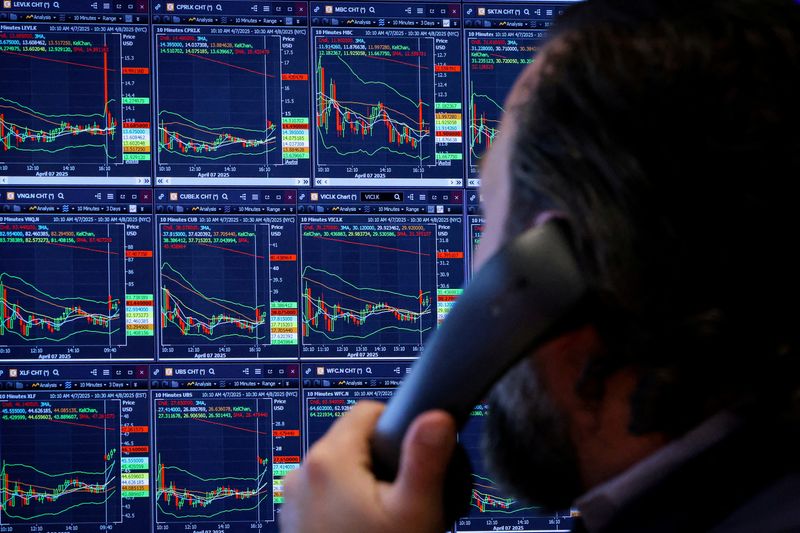
U.S. stock futures are subdued, with markets weighing hopes for a sustained ceasefire between Israel and Iran as well as fresh interest rate comments from Federal Reserve Chair Jerome Powell. Oil prices rise, but stay around multi-week lows, as a stop to the fighting in the Middle East appeared to remain in effect. Elsewhere, economic uncertainty clouds the financial outlook from delivery group FedEx (NYSE:FDX).
1. Futures muted
U.S. stock futures hovered above the flatline on Wednesday, as investors gauged a fragile ceasefire between Israel and Iran and assessed commentary from Powell.
By 03:40 ET (07:40 GMT), the Dow futures contract had inched up by 33 points, or 0.1%, and S&P 500 futures were broadly unchanged, while Nasdaq 100 futures edged up by 19 points, or 0.1%.
The main averages on Wall Street rose in the prior session, buoyed by expectations that, despite some heated rhetoric and an exchange of strikes, a formal halt to hostilities in the multi-day Israel-Iran conflict would hold.
Traders were also noting a modest shift in a dovish direction from Fed policymakers, although Powell used the first day of his testimony to Congress this week to underscore the central bank’s recent wait-and-see stance to future interest rate changes.
Still, markets are cautiously eyeing the looming expiration of a delay to sweeping U.S. "reciprocal" tariffs in early July, with the White House racing to secure deals with dozens of individual countries.
"Trade is the most acute risk facing markets, but investors are maintaining a very calm attitude toward this topic, confident that the ultimate impact won’t be much worse than the 10% baseline tariff," analysts at Vital Knowledge said in a note to clients.
2. Israel-Iran ceasefire holds
The Israel-Iran ceasefire brokered by President Donald Trump appeared to still be in place on Wednesday, one day after the regional rivals said they had ended an air war after 12 days.
Steve Witkoff, Trump’s envoy to the Middle East, said late on Tuesday that negotiations with Iran were "promising," adding that Washington is continuing to hope for a long-term peace with Tehran.
"Now it’s for us to sit down with the Iranians and get to a comprehensive peace agreement, and I am very confident that we are going to achieve that," Witkoff told Fox News’ "The Ingraham Angle" show.
Earlier on Tuesday, Trump announced the start of the ceasefire, but lashed out at both Israel and Iran for carrying on with attacks that seemed to have already been planned before the agreement was revealed. Trump previously came in on the side of Israel, ordering air strikes against Iranian nuclear facilities over the weekend.
Trump claimed that the strikes had "obliterated" the sites, but U.S. intelligence agencies have found that Iran’s enriched uranium stocks had not been eradicated and the nation’s mostly-underground nuclear program may have only been set back by a couple of months, according to media reports.
3. Oil ticks higher
Oil prices edged up, with traders keeping tabs on the resilience of the Israel-Iran ceasefire.
Yet crude remained around multi-week lows, weighed down by expectations that an easing in Middle East tensions will avert disruption to oil supply flows out of the oil-rich region. Worries had particularly swirled around whether Iran’s response to Israeli and U.S. strikes would be to stem shipping through the Strait of Hormuz, a key tanker thoroughfare located along Iran’s southern coast.
Brent crude had increased by 1.7% to $67.30 per barrel by 03:40 ET, while U.S. West Texas Intermediate crude futures had gained 1.8% to $65.53 a barrel.
On Tuesday, Brent settled at its lowest mark since June 10 and WTI since June 5. Both dates were prior to Israel’s surprise strike on Iranian military and nuclear facilities earlier this month.
4. Day two of Powell testimony to Congress
Attention now turns to Washington, where Fed Chair Jerome Powell is due to deliver his second day of testimony on Capitol Hill, this time to a Senate committee.
In prepared remarks released on Tuesday, Powell indicated that the central bank is prepared to maintain current interest rates while monitoring economic developments.
He described the U.S. economy as being in a "solid position" despite elevated uncertainty, with the unemployment rate remaining low at 4.2% in May. He noted that labor market conditions are "broadly in balance and consistent with maximum employment."
The Fed Chair acknowledged that inflation has "eased significantly" from its mid-2022 peaks but remains above the central bank’s 2% target. Total personal consumption expenditures prices rose 2.3% for the 12 months ending in May, while core PCE prices, excluding food and energy, increased 2.6%.
Facing a grilling from House lawmakers over why the Fed is not moving quickly to slash rates, an often-repeated demand from Trump, Powell said officials are wary that price gains could accelerate again soon due to the implementation of elevated U.S. tariffs.
5. FedEx earnings
Shares in FedEx sank in extended hours trading after the delivery giant and economic bellwether unveiled a current-quarter profit forecast that missed analysts’ expectations.
Along with United Parcel Service (NYSE:UPS), FedEx’s results offer a possible glimpse into the state of the wider economy.
Trump’s aggressive trade agenda -- especially towards top global exporter China -- has recently sparked a wave of uncertainty around growth, weighing on consumer confidence and leading many businesses to rein in spending plans until more clarity emerges.
Speaking in an earnings webcast, FedEx CEO Raj Subramaniam said that the global demand environment is "volatile." Executives added that Trump’s decision to scrap duty-free status for low-cost shipments from China-linked retailers like Shein and Temu have also dented the firm’s returns.
Memphis-based FedEx said it expects to deliver fiscal first-quarter adjusted profit of $3.40 to $4 a share, short of Wall Street projections of $4.06, according to LSEG data cited by Reuters. The company did not provide full-year earnings and revenue guidance as well, citing the murky operating backdrop.
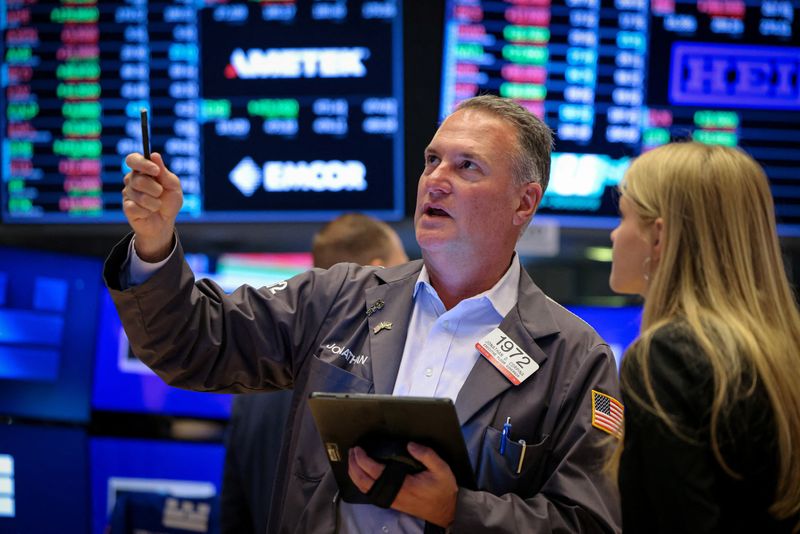
U.S. stock futures indicate a positive open for Wall Street, with President Donald Trump’s declaration of a ceasefire in the Israel-Iran conflict bolstering sentiment -- although key questions linger over the staying power of the halt to hostilities. Oil prices drop following the announcement, while gold falls amid faltering safe-haven demand. Meanwhile, the spotlight will be on Federal Reserve Chair Jerome Powell, who will deliver testimony to Congress this week during a time when he has come under heavy criticism from Trump.
1. Futures higher
U.S. stock futures pointed higher on Tuesday, as investors welcomed Trump’s announcement of a ceasefire in hostilities between Israel and Iran.
By 03:40 ET (07:40 GMT), the Dow futures contract had risen by 347 points or 0.7%, S&P 500 futures had gained 48 points or 0.8%, and Nasdaq 100 futures had advanced by 234 points or 1.0%.
The main averages on Wall Street ended the prior session in the green, boosted by hopes that U.S. involvement in the days-long Israel-Iran air war would remain relatively contained. Worries had swirled around the prospect of U.S. strikes against Iranian nuclear sites over the weekend causing a wider conflict in the Middle East, and potentially disrupting crucial oil supplies out of the region.
Iran responded to the attacks by launching missiles at a U.S. military base in Qatar late on Monday, but no injuries were caused. Trump called the response “weak.”
2. Trump proclaims Israel-Iran ceasefire
Trump has declared that the ceasefire between Israel and Iran is now "in effect," adding that neither side should violate it.
The statement has lifted expectations that the 12-day bout of fighting that included deadly air strikes has now come to an end.
However, Trump’s comments suggested that the ceasefire would take place in stages, with operations already underway being allowed to finish. An Iranian missile attack on Israel on Tuesday killed four people, according to Reuters, citing Israel’s ambulance service. Meanwhile, Tehran said an Israeli strike on northern Iran had killed nine people.
Still, questions surrounded the longevity of the ceasefire. Israel, who was joined by the U.S. in its bid to erase Iran’s nuclear and ballistic missile ambitions, said it had agreed to a halt in the violence, with Prime Minister Benjamin Netanyahu noting that the operation had achieved its objectives.
Iranian Foreign Minister Abbas Araqchi also said Tehran had no intention of continuing its retaliatory strikes moving forward, but stood ready to respond to any further aggression from Israel -- a sentiment that Netanyahu reciprocated.
3. Oil slumps
Oil prices tumbled in the wake of the ceasefire announcement, as fears eased over possible shipping disruptions out of the Middle East.
Since the outset of the conflict, traders had been eyeing concerns that Iran could move to cut off crude supplies flowing through the Strait of Hormuz, a major artery for global shipping that runs along the nation’s southern coast.
Oil had initially spiked with this possibility in mind, but began to fall after Iran’s attack on the U.S. base in Qatar was perceived as tepid and a precursor to a cooling in regional tensions.
At 03:16 ET on Tuesday, Brent crude futures slipped by 3.7% to $67.93 a barrel, while U.S. West Texas Intermediate crude futures dropped by 3.6% to $66.04 per barrel -- the lowest level since before Israel carried out its attacks on Iran earlier this month. Oil prices previously declined by 9% on Monday.
4. Gold retreats as safe-haven demand fades
Gold prices slipped over 1% in European trade, as fading geopolitical tensions prompted investors to shift away from safe-haven assets.
Spot gold declined 1.4% to $3,320.57 an ounce by 03:25 ET, dipping to its lowest level since June 11. Gold futures for August dropped 1.8% to $3,334.87/oz.
Meanwhile, news of the ceasefire put the U.S. dollar on the back foot, with an index tracking the currency against a basket of its peers inching down by 0.4% to 98.06.
The euro and the yen strengthened, buoyed by the slide in oil prices. Both the European Union and Japan rely on imports of crude, while the U.S. is a net exporter.
Benchmark 10-year Treasury yields were also broadly steady after edging lower on Monday following comments from a Federal Reserve official backing an interest rate reduction next month. Yields tend to move inversely to prices.
5. Powell testimony ahead
Markets are now turning their focus from the Middle East to Washington, where Federal Reserve Chair Jerome Powell is due to begin two days of testimony before Congress on Tuesday.
Powell will likely be grilled on the Fed’s decision to keep rates unchanged at its latest meeting and adopt a wait-and-see attitude to future borrowing cost changes. Policymakers, including Powell, have been especially wary of the uncertainty surrounding the impact of Trump’s aggressive tariff agenda.
Trump continued his ongoing campaign against Powell on Tuesday, writing on social media that Powell is a "very dumb, hardheaded person." He called for rates to be brought down by at least "two to three points," arguing that the U.S. will pay for Powell’s "incompetence."
"Crucially, markets may treat any tweaks in Powell’s stance as an indication that Trump’s political pressure has breached the independence shield of the Fed," analysts at ING said in a note to clients, adding that this "has the potential to drive substantial [U.S. dollar] depreciation."

